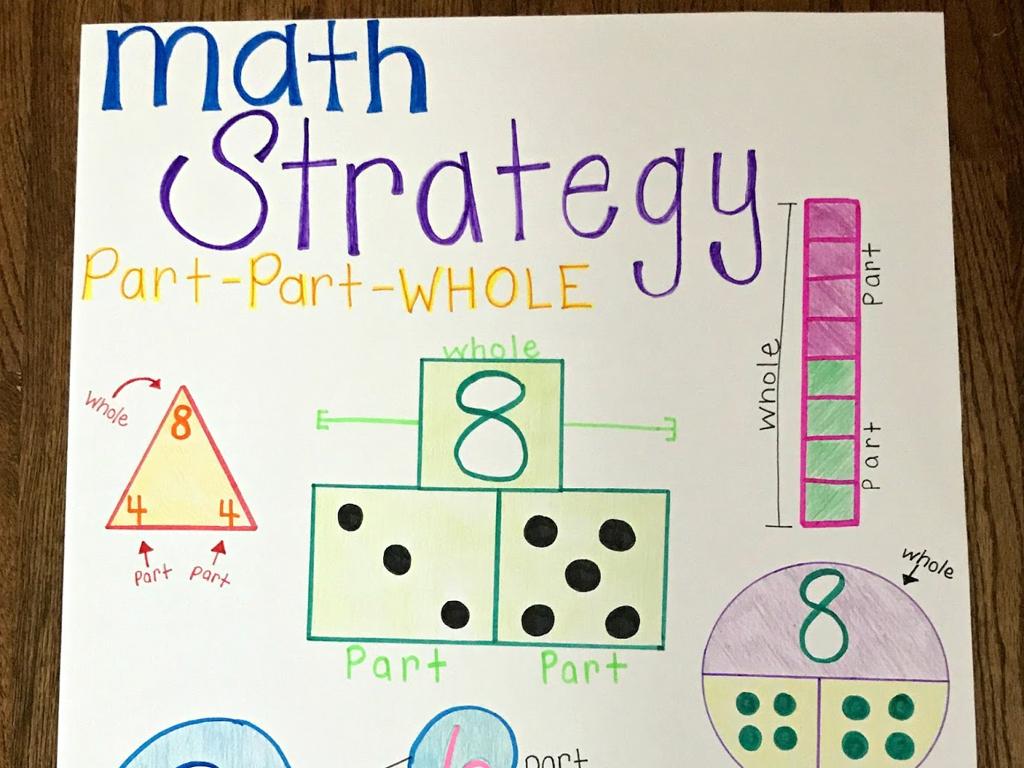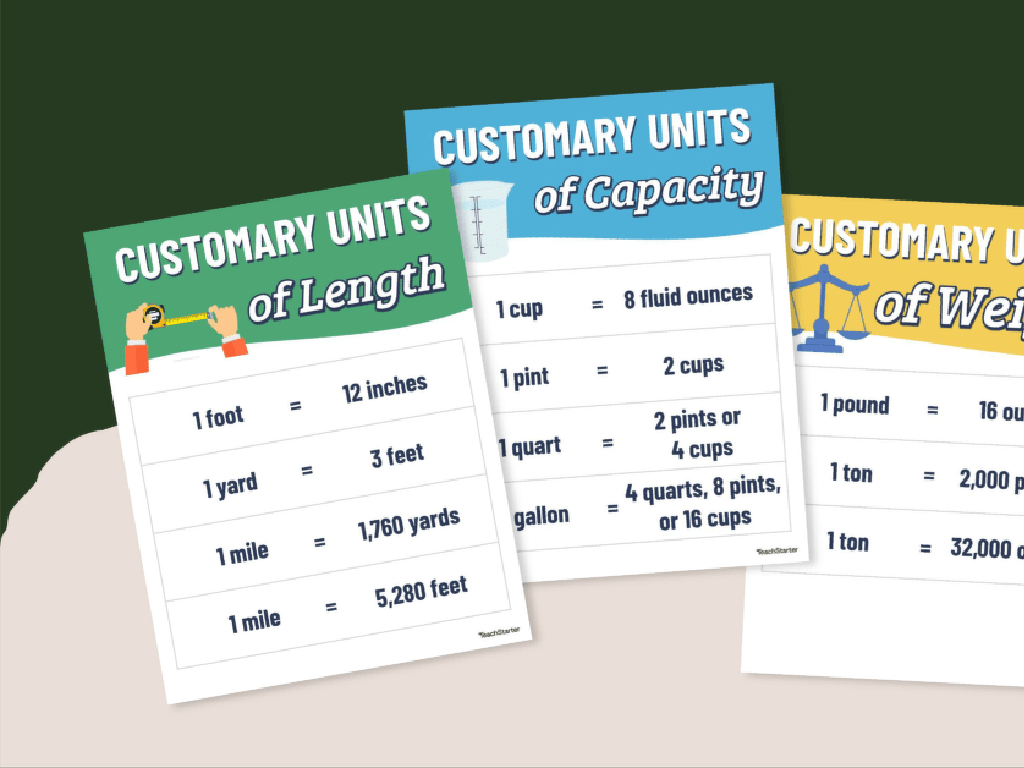Count Dots - 0 To 20
Subject: Math
Grade: Kindergarten
Topic: Counting To 20
Summary: In this engaging Kindergarten math lesson, students learn to count from 0 to 20 using colorful dot visuals and interactive activities. Through songs, group counting, and hands-on worksheets, learners build strong number recognition and develop their counting skills. Visual aids, dot cards, and pictures help make learning tangible and fun. Kids are encouraged to practice counting daily with objects at home, reinforcing early math understanding in practical, everyday ways.
Please LOG IN to download the presentation. Access is available to registered users only.
View More Content
Welcome to Counting!
– Greetings, little mathematicians!
– Today’s focus: numbers and counting
– Counting dots together
– We’ll count dots from 0 to 20 on fun images
– Practice makes perfect
– Keep practicing counting at home with toys or snacks
|
This slide is designed to introduce kindergarten students to the concept of counting within the range of 0 to 20. Start the lesson with a warm and engaging greeting. Explain that the focus of today’s lesson is to understand numbers and how to count them. Use visual aids like dot cards or objects with dots to count together in class, making sure to involve the students in the process. Encourage them to count aloud with you. After the interactive counting session, remind students to practice counting in their daily lives, using items they enjoy, like toys or snacks, to make learning fun and relatable. The goal is to build their confidence in counting and number recognition.
Learning to Count: 0 to 20
– What is counting?
– Counting is saying numbers in order.
– Counting helps us know ‘how many’
– It’s like asking, ‘How many apples are there?’
– Sing the counting song
– We’ll learn a fun song to remember numbers!
– Practice counting with dots
– Let’s count dots together from 0 to 20.
|
This slide introduces the concept of counting to Kindergarten students. Start by explaining that counting is the ability to say numbers one after the other in the correct order. Emphasize that counting is used in everyday life to determine the quantity of items, such as counting toys, snacks, or even steps. Introduce the counting song to make learning fun and memorable; music helps with memorization and engagement. After the song, engage the students in a hands-on activity where they count dots from 0 to 20, reinforcing the concept of counting. This activity can be done with dot cards or a worksheet with dots. Encourage the students to point and count aloud as they progress through the numbers.
Counting Dots: Numbers 0 to 5
– Starting with the basics
– Count dots from 0 to 5
– Look at dot groups for each number
– Practice counting together
– We’ll count aloud: 0…1, 2, 3, 4, 5!
– Understanding numbers 0 to 5
– Recognize how many dots represent each number
|
This slide introduces the concept of counting using visual aids, specifically dots, for numbers 0 to 5. It’s crucial to start with small numbers to build a strong foundation for understanding larger numbers. Encourage the students to count aloud with you, reinforcing their ability to associate the number of objects (dots) with the corresponding numeral. Use dot cards or a whiteboard with drawn dots to visually demonstrate each number as you count. This interactive approach helps kindergarteners grasp the concept of quantity and number recognition. After the group practice, consider engaging the students in individual or small group activities where they can practice counting dots and correlating them to the numbers 0 to 5.
Counting Dots: Numbers 6 to 10
– Counting higher: 6 to 10
– Count dots for each number
– Look at dot groups for each number
– Practice together: 6, 7, 8, 9, 10
– We’ll count the dots as a class
– Visual learning with dots
– Seeing the dots helps us count
|
This slide is aimed at helping Kindergarten students count from 6 to 10 using visual aids like dot representations for each number. Start by engaging the students with the excitement of counting higher numbers. Show them groups of dots corresponding to the numbers 6 through 10 and count each group together. Encourage the students to visualize the quantity each number represents by associating it with the corresponding number of dots. Reinforce learning by having the students practice counting out loud as a class. This visual and interactive approach helps solidify their understanding of basic counting principles.
Counting Dots: Numbers 11 to 15
– You’re doing great, kids!
– What number is after 10?
– Let’s count dots for 11 to 15
– Use dot cards or drawings to visualize
– Count with me: 11 to 15!
– Repeat the numbers together as a class
|
This slide is designed to encourage and praise the children for their progress while introducing them to counting from 11 to 15. Start by acknowledging their effort so far. Ask them what number comes after 10 to engage them and then introduce dot counting as a visual aid to help them understand the sequence of numbers. Use props like dot cards or draw dots on the board for each number from 11 to 15, and count them out loud together. Encourage the children to join in and count with you. This interactive approach helps reinforce their counting skills and number recognition. For the activity, you can distribute dot cards to the students and have them count in groups or individually, then share their counts with the class.
Counting Dots: Numbers 16 to 20
– Counting up to 16
– Let’s find 16 dots together.
– Counting up to 17
– Can you find 17 dots? Let’s try!
– Counting up to 18
– Look for 18 dots, they’re here!
– Counting up to 20
– We made it to 20, great job!
|
This slide is aimed at helping Kindergarten students count dots from 16 to 20. Start by showing them a group of 16 dots and count them one by one. Repeat this process for 17, 18, and 19 dots. When reaching 20, celebrate the milestone as it’s the final number in this counting series. Use visual aids like dot cards or objects to help them visualize each number. Encourage the students to count aloud with you and to use their fingers if necessary. This activity will reinforce their counting skills and number recognition. Make sure to praise their efforts as they reach each new number, building their confidence in counting.
Counting Practice: Let’s Count Objects!
– Practice counting with objects
– Count objects in pictures
– Look at each picture and count aloud
– Determine group quantities
– Use your fingers to count each item
– Discuss our findings together
|
This slide is aimed at providing students with a practical counting exercise. The activity involves counting objects within pictures, which helps to reinforce their ability to count from 0 to 20. Encourage the students to count out loud as this can help with memorization and number recognition. Using fingers to count can also be a tactile way for students to engage with numbers. After counting, ask the students to share how many objects they found in each picture to promote discussion and ensure understanding. For the activity, prepare several pictures with different numbers of objects, ranging from 0 to 20, to cater to the entire counting range. Possible variations of the activity could include counting colored dots, animals, or shapes to keep the activity engaging and diverse.
Count the Dots Together!
– Let’s count dots on the board
– I point, you count aloud
– Get ready to start counting
– Counting from 0 to 20
– Practice counting with dots up to 20
|
This slide is designed for an interactive counting activity with the class. The teacher will point to a series of dots on the board, and the students will count them aloud together. This activity helps students practice their counting skills in a fun and engaging way. It’s important to encourage all students to participate and to count at a pace that allows everyone to keep up. The teacher should be prepared with a set of dot visuals ranging from 0 to 20. Possible variations of the activity could include having students come up to the board to point to the dots, counting in pairs, or even incorporating a song or rhythm to make the counting more enjoyable.
Class Activity: Let’s Count Dots Together!
– It’s counting time!
– Receive your dot worksheet
– A sheet full of fun dots to count
– Count each dot carefully
– Take your time to count each one
– Write the number you counted
– After counting, write down the total
|
This activity is designed to help Kindergarten students practice counting within the range of 0 to 20. Distribute worksheets with a random arrangement of dots, ensuring that the total does not exceed 20. Encourage the students to point and count each dot aloud before writing the number down. This exercise will reinforce their counting skills and number recognition. For differentiation, provide varying levels of difficulty in the worksheets for students at different skill levels. Some students may have fewer dots to count, while others may have closer to 20. Walk around the classroom to assist and praise the students for their efforts. After the activity, discuss as a class the different numbers everyone counted and praise their hard work.
Great Job Counting!
– Amazing counting today!
– Practice makes perfect
– The more you count, the better you get!
– Keep counting daily
– Count dots, toys, or even steps
– Count everything around
– Trees, cars, stars – count them all!
|
This slide is meant to congratulate the students on their counting efforts and to encourage them to continue practicing. Emphasize the importance of regular practice to improve their counting skills. Suggest to them to count anything they encounter in their daily lives, such as toys, steps they climb, or even food items on their plate. This will help them understand that math is not just limited to the classroom but is a part of their everyday life. Encourage them to share what they counted each day as a part of their routine. This will make the next class interactive and fun as they discuss what they’ve counted.





